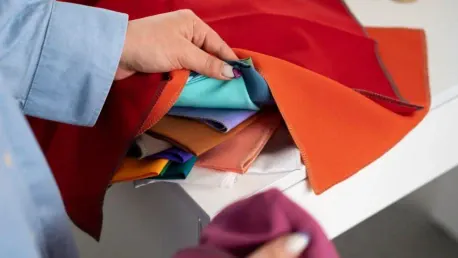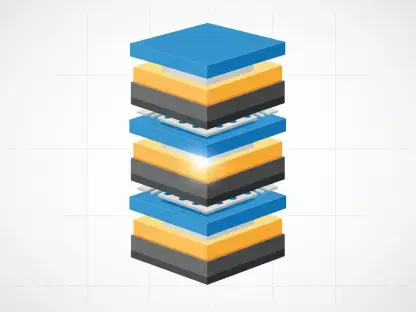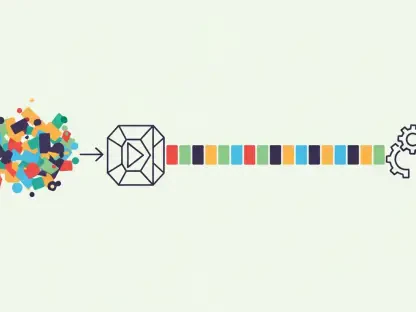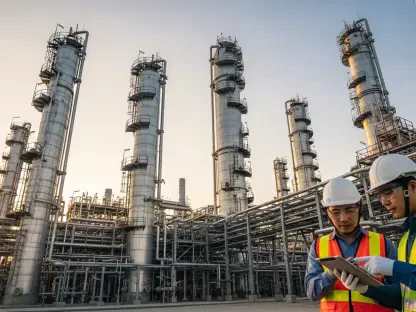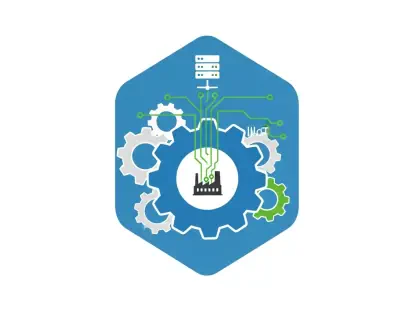The fashion industry is undergoing a transformative shift as innovative textile recycling methods emerge to combat the environmental impact of fast fashion. With textile waste reaching unprecedented levels, companies like Circulose are pioneering new recycling technologies that promise to revolutionize the industry. This article explores the advancements in textile recycling, the challenges faced, and the potential for a more sustainable future in fashion.
The Rise of Textile Waste
Fast Fashion’s Environmental Toll
The rapid increase in textile fiber production, driven by the fast-fashion phenomenon, has led to a significant rise in textile waste. Over the past 20 years, production has nearly doubled, reaching 120 million tons annually, with projections suggesting a rise to 160 million tons by 2030. This surge in textile production results in vast quantities of textiles being discarded after only a few uses, contributing to substantial environmental repercussions. The fast-fashion industry, with its emphasis on trendy and inexpensive clothing, encourages consumers to frequently update their wardrobes, leading to a cycle of consumption and disposal.
This surge in textile waste has significant environmental consequences. The production of textiles consumes natural resources, including water, cotton, wood, fertilizers, and petroleum-based plastics, contributing to deforestation and agricultural waste. The fashion industry is responsible for 10 percent of global greenhouse gas emissions, exacerbating climate change. The disposed textiles often end up in landfills or are incinerated, releasing toxic chemicals and greenhouse gases into the atmosphere. The environmental toll of fast fashion emphasizes the urgent need for innovative recycling methods to mitigate its impact.
Global Textile Waste Statistics
In 2018, over five million tons of textiles were discarded in the European Union alone, averaging 26 pounds per person. In the United States, the figure was approximately 70 pounds per person annually, with only 15 percent being resold or recycled. The rest was relegated to landfills or incinerated, creating significant environmental challenges. The accumulation of textile waste in landfills contributes to soil and water pollution, as the chemicals and dyes used in clothing manufacturing leach into the environment. Incineration, although reducing the volume of waste, releases harmful emissions that impact air quality and public health.
The global textile waste crisis is exacerbated by the lack of effective recycling infrastructure and technologies. Most textiles are made from blends of natural and synthetic fibers, making it difficult to recycle them using traditional methods. The current recycling processes are often unable to separate and recover the different materials, leading to a loss of valuable resources. Additionally, the fast-fashion industry’s reliance on low-cost production methods means that recycled textiles must compete with cheaper virgin materials, hindering the adoption of sustainable practices. Addressing these challenges requires a concerted effort to develop and implement advanced recycling methods.
Innovations in Textile Recycling
Circulose: A New Frontier
Circulose, a company based in Sundsvall, Sweden, is at the forefront of textile recycling innovation. Their plant processes old textiles to produce a material that can be spun into fibers for manufacturing new clothing. The process involves shredding old clothes, breaking them down further, and bleaching them using chlorine and ozone. A lye solution dissolves components like zippers and buttons, while the plastic content is removed. The resulting pulp is pressed and dried into mats, which can be spun into new textiles. Annually, this process can produce up to 60,000 tons of textile pulp, equating to around 150 million new t-shirts.
Circulose’s closed-loop, chemical recycling method represents a significant advancement in the field of textile recycling. Unlike traditional mechanical recycling, which often degrades the quality of the fibers, chemical recycling maintains the integrity of the materials, allowing for the production of high-quality textiles. This innovation addresses one of the major limitations of previous recycling methods, enabling the creation of new garments that are indistinguishable from those made with virgin materials. Circulose’s method also emphasizes sustainability, as it uses 100 percent textile waste and minimizes the use of harmful chemicals.
Chemical vs. Mechanical Recycling
The article emphasizes two primary methods for recycling textiles: mechanical and chemical. Mechanical recycling often fails to preserve the integrity of textile fibers, which become too short to be reused in textile production after being recycled two or three times. Mechanical recycling typically involves shredding and re-spinning the fibers, but each cycle reduces the fiber length and quality. As a result, mechanically recycled textiles are usually downcycled into lower-quality products such as cleaning cloths, insulation, or automotive materials rather than new clothing.
In contrast, chemical recycling breaks down raw materials into their basic components, such as monomers and polymers, allowing for repeated recycling without significant degradation of material quality. Chemical recycling can treat polyester, nylon, and other synthetic fibers, as well as cellulose-based fibers like cotton and rayon. This method dissolves or depolymerizes the fibers into their constituent molecules, which are then purified and re-polymerized to form new fibers. The ability to recycle textiles multiple times without quality loss makes chemical recycling an essential innovation for achieving a circular fashion economy.
European Advancements in Chemical Recycling
Eeden and Rittec: Pioneering New Methods
Innovations in chemical recycling are beginning to surface across Europe. Eeden, a startup supported by research from Niederrhein University of Applied Sciences Textile and Clothing Technology, plans to open a pilot plant in 2025 to chemically recycle polyester and obtain cellulose from cotton wool. The process involves breaking down the polyester fibers into their monomers using a combination of heat, pressure, and catalysts. The recovered monomers can then be purified and re-polymerized to produce new polyester fibers. Eeden’s method also targets cellulose, which can be extracted from cotton wool and used to create new fibers.
The German company Rittec has developed a method to remove polyester from blended fabrics, showcasing the potential for advanced recycling techniques. Rittec’s process involves selectively depolymerizing the polyester component of mixed-fiber fabrics while preserving the other fibers, such as cotton or wool. The depolymerized polyester is then purified and re-polymerized, creating a closed-loop recycling system. These advancements highlight the growing focus on developing chemical recycling methods that can handle diverse textile materials and meet the industry’s needs for high-quality recycled fibers.
Carbios and Enzyme-Based Recycling
The French company Carbios is using enzymes for fiber-to-fiber polyester recycling, highlighting the growing focus on polyester due to its prevalence in textile production. Carbios has developed a proprietary enzyme that can selectively break down polyester fibers into their monomer components. The enzyme-based process is environmentally friendly and operates at lower temperatures than traditional chemical recycling methods, reducing energy consumption. The purified monomers can then be re-polymerized to create new high-quality polyester fibers, suitable for producing new garments.
These advancements demonstrate the potential for chemical recycling to transform the industry by enabling the production of high-quality recycled textiles. Enzyme-based recycling methods offer a promising alternative to conventional chemical processes, as they are more selective and efficient. By harnessing the power of biotechnology, companies like Carbios are paving the way for a sustainable fashion future, where textiles can be recycled multiple times without losing their quality or value. The continued development and commercialization of enzyme-based and other advanced chemical recycling methods will be crucial in addressing the environmental challenges posed by the fashion industry.
Major Industry Players Enter the Arena
BASF and Inditex Collaboration
Major players in the textile and chemical industry are also entering the recycling arena. German company BASF is collaborating with fashion giant Inditex to produce a nylon material from recycled textile waste. BASF’s innovative chemical recycling process depolymerizes nylon fibers from discarded textiles, purifies the monomers, and re-polymerizes them to create high-quality recycled nylon. This collaboration aims to integrate recycled materials into Inditex’s production lines and promote a circular economy within the fashion industry.
Inditex’s subsidiary Zara has already rolled out jackets made entirely from this material since early 2024, showcasing the potential for large-scale adoption of recycled textiles. The introduction of these recycled nylon jackets into their product line demonstrates Inditex’s commitment to sustainability and reducing the environmental impact of their operations. By partnering with BASF, Inditex is leveraging cutting-edge recycling technologies to create high-quality, durable garments from textile waste, setting a precedent for other fashion brands to follow.
H&M and Syre’s Ambitious Plans
H&M has announced plans to sell reused textiles through its subsidiary Syre, which aims to produce fibers from recycled polyester using enzymes. Syre’s innovative recycling process leverages enzyme technology to break down polyester fibers into their monomer components, which can then be purified and re-polymerized to create new polyester fibers. This method not only reduces waste but also significantly lowers the carbon footprint of producing new polyester. Syre claims this process can reduce CO2 emissions by up to 85 percent compared to producing new polyester.
The company plans to launch a pilot plant in North Carolina within the year, followed by larger-scale operations in Vietnam and Spain by 2027. These ambitious plans reflect H&M’s commitment to sustainability and their efforts to minimize the environmental impact of their products. By investing in advanced recycling technologies and expanding their capacity for recycled textile production, H&M is positioning itself as a leader in the sustainable fashion movement. The success of Syre’s enzyme-based recycling process could pave the way for other fashion brands to adopt similar practices and contribute to a more circular economy.
Challenges and Future Directions
Diverse Fabrics and Recycling Complexities
Despite these advancements, identifying a single, definitive recycling process applicable to all textiles remains a challenge. Various fabrics, dyes, and materials complicate recycling efforts, but ongoing research endeavors to find effective solutions. For example, the Royal Institute of Technology in Stockholm spent nearly a decade developing a process for Circulose before operationalizing it in 2019. The complexity of recycling different textiles arises from the diverse chemical compositions and physical properties of the materials used in clothing production.
The presence of mixed fibers, dyes, and finishing agents further complicates the recycling process. Research institutions and companies continue to explore innovative methods to address these challenges, including developing selective depolymerization processes, enzyme-based recycling, and advanced sorting technologies. The goal is to create versatile recycling systems that can efficiently process a wide range of textiles and recover valuable materials for reuse. Achieving this will require collaboration between academia, industry, and policymakers to develop and implement standardized recycling practices.
Economic and Regulatory Hurdles
Achieving commercial success in textile recycling is fraught with obstacles. Circulose faced insolvency issues due to its high production costs, which are significantly more expensive than conventional raw materials like cotton or polyester. The financial burden of developing and scaling up advanced recycling technologies can be prohibitive, particularly for startups and smaller companies. Additionally, global manufacturers’ reluctance to integrate recycled textiles into their production lines adds another layer of complexity, often due to uncertain regulatory demands and the higher costs associated with recycled materials.
Government policies and regulations play a crucial role in promoting sustainable practices and supporting the adoption of advanced recycling technologies. Incentives such as tax breaks, subsidies, and grants can help offset the costs of developing and implementing innovative recycling methods. Regulatory frameworks that mandate the use of recycled content in textile production can also drive demand for recycled materials. The fashion industry must collaborate with policymakers to create a favorable environment for advancing textile recycling and achieving a circular economy.
Towards a Sustainable Fashion Future
Designing for Longevity
The fashion industry is experiencing a significant transformation as innovative textile recycling methods surface to address the environmental impact of fast fashion. With textile waste reaching alarmingly high levels, companies like Circulose are leading the way with groundbreaking recycling technologies that hold the promise of revolutionizing the industry. This shift is crucial as the environmental footprint of fashion grows ever larger. The article delves into these advancements in textile recycling, shedding light on the obstacles encountered and the promising potential for a more sustainable future in the fashion world. The emergence of such technologies signifies a critical step in reducing waste and promoting a circular economy in the fashion sector. The success of these initiatives could mean a significant reduction in the industry’s reliance on virgin materials, thereby mitigating its overall environmental impact. As the sector evolves, the collaboration of designers, manufacturers, and consumers will be essential to successfully implementing these sustainable practices and ultimately transforming the fashion landscape for the better.
